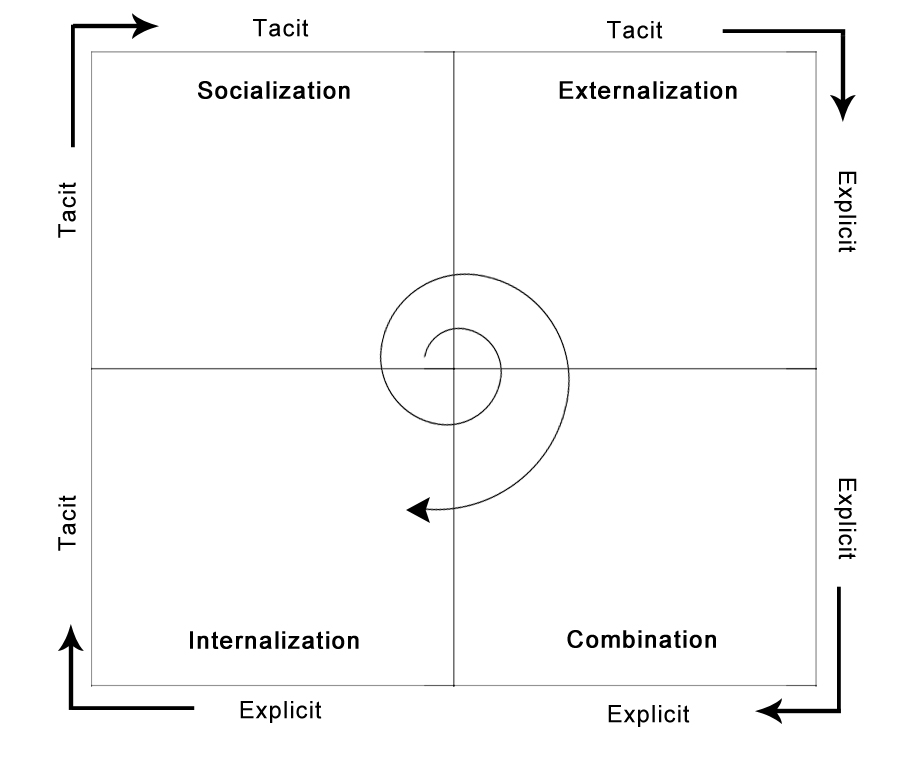Accelerated learning is team learning
Scaling, Culture and Agile Evolution – Part 2 While rummaging in my documents the other day I came across again the well-known text in which…
Scaling, Culture and Agile Evolution – Part 2
While rummaging in my documents the other day I came across again the well-known text in which Scrum is mentioned first: “The new new Product Development Game” by Hirotaka Takeuchi and Ikuriro Nonaka from Harvard Business Review from January 1986. However, Scrum is not mentioned in our sense as a development methodology for (mostly) software development, but as an aspect of Lean Development. Interesting are the emphases that are set in it: the first one is the avoidance of handovers – Scrum is set in contrast to a relay race in it:
Instead, companies in Japan and the United States are using a holistic method-as in rugby, the ball gets passed within the team as it moves as a unit up the field.
This holistic approach has six characteristics: built-in instability, self-organizing project teams, overlapping development phases, “multilearning,” subtle control, and organizational transfer of learning. The six pieces fit together like a jigsaw puzzle, forming a fast flexible process for new product development. Just as important, the new approach can act as a change agent: it is a vehicle for introducing creative, market-driven ideas and processes into an old, rigid organization.
Under the old approach, a product development process moved like a relay race, with one group of functional specialists passing the baton to the next group … Under the Rugby approach, the product development process emerges from the constant interaction of a hand-picked, multidisciplinary team whose members work together from start to finish.
One section in particular piqued my curiosity, the section on learning:
The shift from a linear to an integrated approach encourages trial and error and challenges the status quo. It stimulates new kinds of learning and thinking within the organization at different levels and functions. Just as important, this strategy for product development can act as an agent of change for the larger organization.
Exciting – but it wasn’t concrete enough for me yet, it doesn’t explain much about how this is going to work. But in fact, Nonaka has been working with Noburo Konno and others on how this accelerated learning might work and has described a dynamic process for it: the SECI model for knowledge development. The process is based on an interplay of implicit (“tacit”) and explicit knowledge and describes cyclical or spiral phases:
- S – Socialization: in this step, knowledge is acquired through implicit experience, e.g., working side by side or some other form of physical proximity and direct experience
- E – Externalization: in the next step, the knowledge is expressed explicitly, that is, it is put into an understandable form in which third parties can understand it. Here, knowledge becomes accessible to other team members and it changes from a purely implicit to an explicit form.
- C – Combination: this also sets the stage for placing the new knowledge in a broader and more complex context. This is a core requirement for systematization and generalization.
- I – Internalization: in the fourth step of the cycle, the new insights are integrated into daily work and again become part of the personal skill set.

Team “Ba” as a prerequisite
The cited paper cites “Ba” as a basis for this process. Ba is concept that describes a common area, such as a workplace or team space, shared experiences or attitudes, in which the kinds of relationships can develop that make shared learning possible.
This is why teams are so important
This answered some questions for me about why stable self-organizing teams with a shared workplace are so important
- They provide a stable framework for constant exchange and high bandwidth for shared learning
- Teams in a shared workspace can build the relationships and trust needed to develop the ba
- Self-organization creates the degree of autonomy that is essential for this type of exchange
It is essential to take these advantages with you if you want to use Agil on a large scale.
Part 1: four advantages of agile teams
Part 2: Accelerated learning is team learning